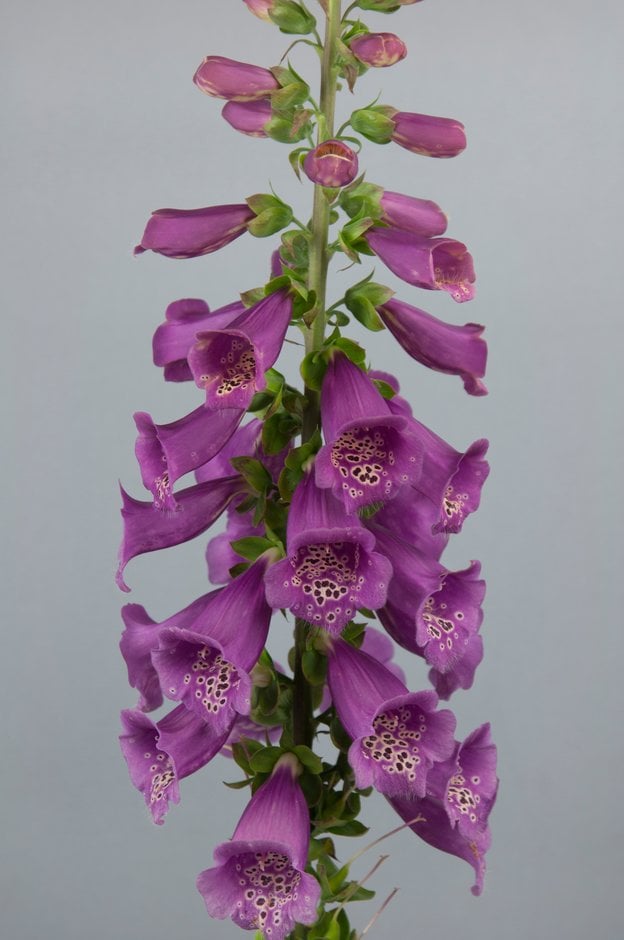Digitalis purpurea 'Camelot Rose' (Camelot Series)

foxglove 'Camelot Rose'
A biennial or short-lived perennial, 1.2m high, with overwintering rosettes of green leaves, and racemes of tubular pink flowers, spotted inside with maroon outlined in cream, over a long flowering period in summer; the flowers appear in the first rather than second year, grow all round the spikes rather than on one side
Size
Ultimate height
1–1.5 metresTime to ultimate height
1–2 yearsUltimate spread
0.1–0.5 metresGrowing conditions
Moisture
Moist but well–drainedpH
Acid, NeutralColour & scent
| Stem | Flower | Foliage | Fruit | |
| Spring | Green | |||
|---|---|---|---|---|
| Summer | Cream Red Pink | Green | ||
| Autumn | Green | |||
| Winter | Green |
Position
- Partial shade
Aspect
South–facing or North–facing or West–facing or East–facing
Exposure
Exposed or Sheltered Hardiness
H5Botanical details
- Family
- Plantaginaceae
- Native to GB / Ireland
- No
- Foliage
- Semi evergreen
- Habit
- Columnar upright
- Potentially harmful
- TOXIC if eaten. Wear gloves and other protective equipment when handling TOXIC to pets - see the HTA guide to potentially harmful plants for further information and useful contact numbers
- Genus
Digitalis can be biennials or usually short-lived perennials forming a rosette of simple leaves with bell-shaped flowers in slender, erect, usually one-sided racemes
- Name status
Accepted
How to grow
Cultivation
Grow in moist but well-drained humus-rich soil in light dappled shade, for example in a mixed bed or an open woodland garden, and add organic mulch; native foxgloves are usually found in the wild on acidic soils, but they can also grow on neutral soils, and tolerate slightly alkaline soils. See foxglove cultivation for further advice
Propagation
Propagate by seed, sown in spring; it is an F1 hybrid, so plants from self-seeding will not come true
Suggested planting locations and garden types
- City and courtyard gardens
- Cottage and informal garden
- Coastal
- Wildlife gardens
- Flower borders and beds
- Wall side borders
Pruning
No pruning required, but deadheading, cutting down dead flowering stems, will encourage secondary flowering shoots, and encourage growth the following year
Pests
May be susceptible to aphids and leaf and bud eelworm
Diseases
May be susceptible to powdery mildews, downy mildews and leaf spot
Get involved
The Royal Horticultural Society is the UK’s leading gardening charity. We aim to enrich everyone’s life through plants, and make the UK a greener and more beautiful place.
